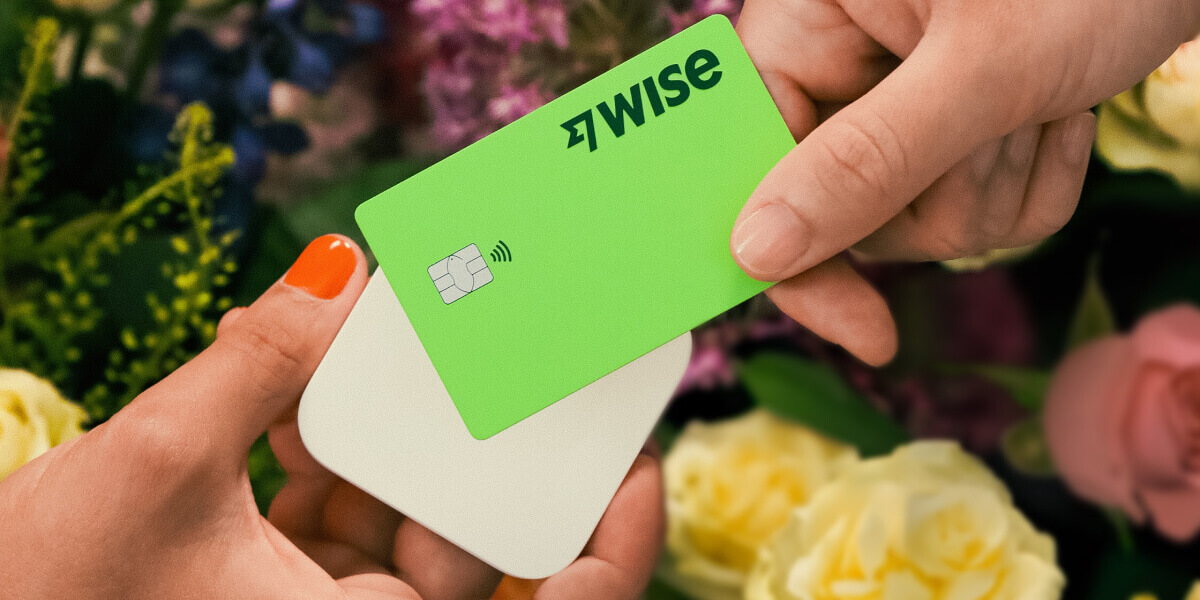Using your Irish Wise card in Iceland: Charges and ATMs tips
Does your Wise card work in Iceland? Yes, both for payments and ATM withdrawals. Learn about fees and how to use your Wise card on your Icelandic adventure.

Using your Irish credit card might be a convenient way to spend overseas, but does it offer the best value? If you’re planning a trip abroad and are thinking about using your credit card to pay while you're away, it’s important to first know what fees might apply, and how you can avoid unnecessary charges.
We’re going to walk you through how Irish credit cards tend to work internationally, and the kinds of fees to expect. We’ll also let you know about the Wise debit card, another way for spending abroad that can help you save on foreign currency fees.
In most cases, your Irish credit card will work abroad just like it does at home, because cards that are issued on global networks like Visa and Mastercard are widely accepted around the world.
You should be able to use your credit card abroad outside the Eurozone at many places, such as shops, restaurants and to pay for experiences, but the charges would likely be higher than when you’re paying in euros due to the currency conversion.

If your credit card supports contactless payments, you should be able to tap and pay in most countries. Just keep in mind that local spending limits may apply.
ATM withdrawals should also be possible, but keep in mind this is generally an expensive exercise with a credit card due to the cash advance fees and interest. We will explain more about this later on in this article.
Whether or not you need to tell your credit card company about your travel plans depends on your bank or credit card provider.
Most Irish banks have fraud monitoring systems in place that could flag your international transactions as suspicious. When this happens, an automatic block might be placed on the card.
Here’s what AIB and Bank of Ireland recommend to their customers:
- Bank of Ireland: You don’t have to let them know you’re travelling, but ensure they have the right email and phone number of file. That way they can contact you to verify that a genuine cardholder is using the card if there’s any questionable transactions.¹
- AIB: You don’t have to let AIB know about your plans, but if there’s a personal credit card transaction that flags as suspicious they will text you from +353 86 180 3392 and ask you to respond with a ‘1’ or ‘9’.²
Using your Irish credit card overseas can come with a few fees, including foreign transaction charges and ATM withdrawal fees. These fees vary by bank, so it pays to compare your options before settling on a choice.
Here’s a look at the fees from three major Irish banks when you spend or withdraw cash abroad using a credit card.
| Credit Card | Atm Withdrawal - Cash advance fee | International spending fees |
|---|---|---|
| Permanent TSB³ ICE Visa Credit Card | 1.5% or €2.00, whichever is higher | Currency conversion fee of 1.75% |
| AIB⁴ CLICK Visa Credit Card | 1.5% of the value, minimum of €1.90 | Currency conversion fee of 1.75% for non-euro transactions in Europe, and 2.75% for the rest of the world |
| Bank of Ireland⁵ Classic Credit Card | 1.5% of the value, minimum of €2.54 | Cross border handling fee of 2.25% |
When looking at this, keep in mind that ATM withdrawals are usually subject to both the cash advance fee and the international spending fees. Also, independent ATM providers can charge additional fees.
Something that people often overlook is the exchange rate used to convert your euros to other currencies.
Ideally you want the mid-market exchange rate that providers like Wise uses, and where you’re getting the mid-point between the buy and sell prices on the currency exchange market.
Most credit cards use the Visa or Mastercard rate, which may come with an extra margin that’s passed on to you on top of all the other fees. It’s a good idea to check what rate your card uses, and how it stacks up against the mid-market rate.

If you are looking for another way to spend overseas, the Wise debit card might be what you are looking for. It's connected to the Wise multi-currency account, which means you can hold +40 currencies on it, and also spend with your card from these balances.
If you already have the currency you're spending in your account, there are no fees for spending. | Using your Wise card abroad and don't have enough money in the local currency? No problem. Thanks to the Smart Conversion technology, money will be automatically deducted from the currency where the exchange rate is the best. |
|:---:|
Open your Wise Account
for free 🚀
Have a look on the costs of using your Wise card abroad:
| Wise card | Fees |
|---|---|
| Spending abroad | If you hold the currency you are spending: FREE If you don't hold the currency: currency conversion fee from 0.61% (depending on the currency) + conversion at the mid-market exchange rate |
| ATM withdrawals | 2 free withdrawals per month*, up to 200 EUR. For amounts over the limit, fee of 1.75%. After the withdrawals limit, each withdrawal costs 0.5 EUR. |
* Wise will not charge you for these withdrawals, but some additional charges may occur from independent ATM networks.
Credit cards have their use but when paying abroad you should always check and compare the fees of your bank or provider to see if there is any difference between credit or debit card use.
However, pay attention to the cash advance rate, which is the interest rate charged by your provider when you take cash using your credit card. Bank of Ireland⁵, for example, does not offer an interest-free period (number of days for which you will not be charged interest) for cash advances, and will charge interest from the date the cash advance transaction is made.
If you’re looking for a smarter way to spend internationally, the Wise card could be another option. It’s a debit card connected to a multi-currency account, and you can hold and spend in 40+ currencies using the mid-market exchange rate, with low, transparent fees.
If you’re offered the choice to pay in euros or the local currency, always opt for local currency.
Why? Paying in euros means you will probably get a Dynamic Currency Conversion (DCC), where the merchant or ATM is applying their own exchange rate. This is often less favourable than what your card provider would give you.
By choosing to pay in the local currency, your card provider and their network handles the exchange instead.
| 🔎 Read also: Is Wise card debit or credit? |
|---|
Sources
Sources last checked on: 22 July 2025
*Please see terms of use and product availability for your region or visit Wise fees and pricing for the most up to date pricing and fee information.
This publication is provided for general information purposes and does not constitute legal, tax or other professional advice from Wise Payments Limited or its subsidiaries and its affiliates, and it is not intended as a substitute for obtaining advice from a financial advisor or any other professional.
We make no representations, warranties or guarantees, whether expressed or implied, that the content in the publication is accurate, complete or up to date.

Does your Wise card work in Iceland? Yes, both for payments and ATM withdrawals. Learn about fees and how to use your Wise card on your Icelandic adventure.

Make currency conversion a breeze at Dublin Airport. Learn how to exchange money for the best rates and service convenience.

Do you need to use your Revolut card abroad? Check out the fees, limits, how it works, and if you can use the virtual card too.

Learn about the Bank of Ireland debit card abroad, the fees, exchange rate, and an alternative when travelling outside Ireland.